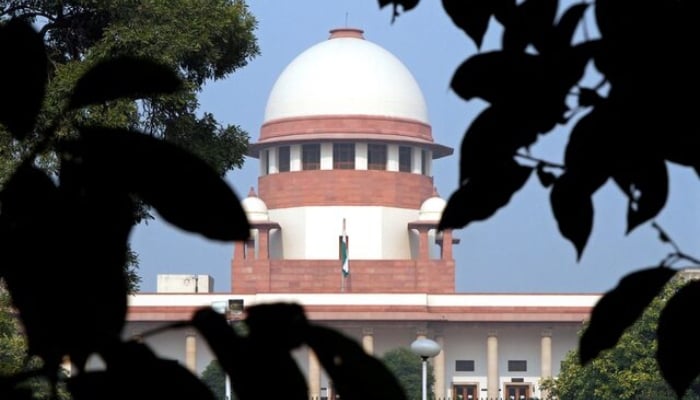The Supreme Court of India has recently affirmed the inclusion of Urdu on the sign of a municipal council building in Maharashtra. This important decision underscores the country’s commitment to linguistic and cultural diversity.
A panel of Justices Sudhanshu Dhulia and K Vinod Chandran expressed that “language is culture” and should not serve as a divisive factor, emphasizing Urdu as an exemplary representation of “Ganga-Jamuni tehzeeb” or Hindustani culture.
The Supreme Court dismissed a petition from a former council member who contested the use of Urdu on the signboard of the Patur Municipal Council in the Akola district, according to the Indian Express.
The justices declined to overturn the Bombay High Court’s previous ruling, which indicated that using Urdu does not violate the Maharashtra Local Authorities (Official Languages) Act of 2022 or any other current legislation.
Justice Dhulia, while delivering the judgment, encouraged reconsideration of biases related to language and stated, “Our misunderstandings, even prejudices against a language, must be earnestly and honestly evaluated in light of the rich diversity of our nation: what strengthens us can’t be seen as a weakness. We should embrace Urdu and all languages.”
The court tackled the prevailing “misconception that Urdu is foreign to India,” asserting categorically that “it is a language that originated on this very land.”
Justice Dhulia elaborated, stating that “language is not synonymous with religion. It does not depict any religion; rather, it belongs to a community, a region, and its people.” He stressed that the primary role of a language is communication, noting, “Before a language serves as a tool for education, its most basic function has always been communication. The intent behind using Urdu here is simply to facilitate communication.”
The judgment further clarified that the municipal council’s aim was effective communication, reinforcing the importance of language, which was highlighted by the Bombay High Court.
Multilingual Nation
The Supreme Court also highlighted India’s immense linguistic variety, referencing the 2001 census, which identified 122 major languages and 234 mother tongues, with Urdu ranking as the sixth most widely spoken scheduled language across the majority of the country.
The 2011 Census tallied a rise in mother tongues to 270 (counting languages with at least 10,000 speakers), hinting that the total could be in the thousands.
Addressing historical perspectives, the court remarked that “prejudice against Urdu arises from the false notion that it is foreign to India,” emphasizing that Urdu, like Marathi and Hindi, is an Indo-Aryan language that evolved in India to meet the demands of inter-cultural dialogue.
Over time, the language gained sophistication and became favored by numerous renowned poets, stated the judgment.
The court also pointed out the significant integration of Urdu in everyday Hindi and within legal contexts, citing terms such as “adalat” (court), “halafnama” (affidavit), and “peshi” (court appearance), as well as words used in the Supreme Court like “vakalatnama” (power of attorney document).
Moreover, it acknowledged that various Indian states and union territories have recognized Urdu as a second official language.
The court remarked, “Critiquing Urdu also indirectly critiques Hindi, since linguists and literary experts affirm that Urdu and Hindi are not distinct languages but rather variations of a single language.”
The ruling observed that, “According to Article 343 of the Constitution, Hindi is the official language while English was permitted for official use for 15 years but this does not imply that Hindustani and Urdu have vanished. Such an outcome was never the intention of the Constitution’s authors.”
“Even now, the language spoken by the general populace is rich with Urdu words, even if they are unaware of it,” the judgment noted.
Ultimately, by affirming the High Court’s stance, the Supreme Court concluded that for a municipal council striving to connect with its community, incorporating Urdu on a sign alongside the official language (Marathi) is a practical matter of effective communication and should not meet resistance if that segment of the community understands it.
“Language serves as a conduit for the exchange of ideas, bridging individuals with diverse views and beliefs; it must not become a source of division,” the bench firmly stated.



